Shanghai Old Reform | Share before bedtime
Author:Jiefang Daily Time:2022.07.25
Housing was a pain in the hearts of many Shanghai people. In the early 1990s, the per capita residence area of hundreds of thousands of households in Shanghai was less than 4 square meters, of which more than 30,000 households had a per capita residence of less than 2.5 square meters.
On the one hand, there are neon high -rise buildings, and on the other hand, it is a rigid room Jianwu.
Since the 1990s, Shanghai has dared to reform and break through again and again, crack the problems of the old reform, and promote urban residential construction.
Everyone in the people's cities should obtain personal dignity that matches the city's glory. In the past five years, Shanghai's old reform has pressed the "fast -forward keys". A large number of citizens have bid farewell to the old and embrace new life. The city's update has also taken a more solid step.
On July 24, 2022, the old two plots of Jianguo Middle Road took effect. As a result, Huangpu District, which has the heaviest and most difficult task in Shanghai, completed the renovation of old houses below the second level. This also means that the old transformation of the second level of Shanghai's film is ended.
This is an important milestone in the history of Shanghai. Standing at this historical node, we look back at the scene of the scene of the scene.
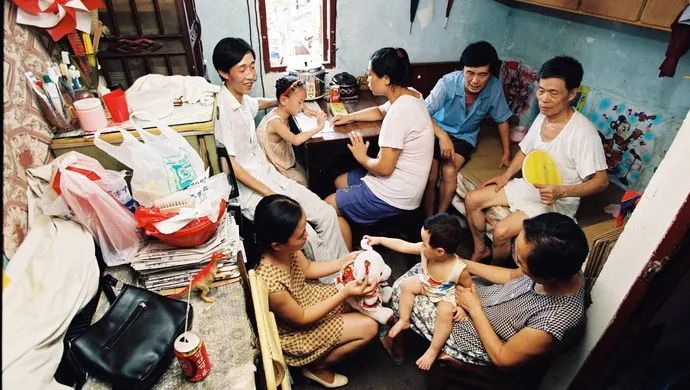
In the 1980s, the life scene where the three generations and the young and old lived in the simple house of the dangerous shed in Shanghai. (Data pictures, provided by the Party History Research Office of the Municipal Party Committee)
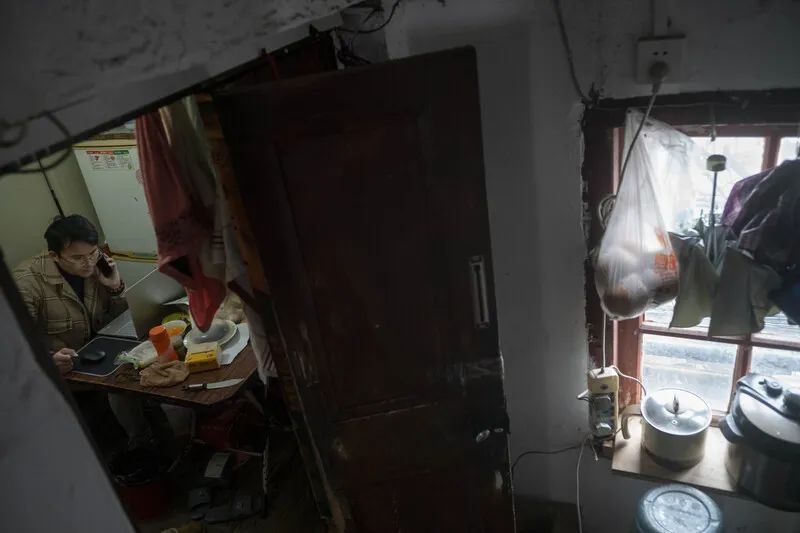
Yangpu Ping Liang Road Street 4 neighborhoods living in the lofts, putting a table by the bed, both dining table and desk. Yellow tip photography
For the first time, the "Land Rental Rent" was used to transform the oblique three blocks in the old area. In 1992
On the road of Dupu, there are 4 31 -storey high -rise buildings in Haihua Garden Community, and today's eyes are not eye -catching; but more than 20 years ago, "Haihua" was a legendary real estate in Shanghai. Not only because of high -quality, good quality, but also because of its special transformation process.
In 1992, the original Luwan District first opened a precedent, and the old district was transformed in the form of "land rent" in Haihua Garden and its surrounding oblique three plots.
The oblique three plots are close to Rihui Port. It is north of the west of Datuqiao, east of Ruijin South Road, and north of Luwan Middle School. At that time, it was a shantytown. Residents were looking forward to relocation. However, it is estimated that the cost of relocation is 100 million yuan. At that time, the old renovation funds in Shanghai were 400 million yuan, and it had to be allocated to several districts, and relying on the finance of the original Luwan District, it could not support such huge transformation funds.
The original Luwan District was bold and innovated. By looking for, contact and negotiations, in early 1992, Shanghai Haihua Real Estate Co., Ltd. was established by Hong Kong China Overseas Development Co., Ltd., Shanghai Luwan District Housing Construction and Development Corporation and Shanghai Huahai Technology Industry Company. The oblique three blocks are planned to build a commercial house on it.
The relocation was launched in March 1992. In just half a year, the city's first wool land leased land was paid to the developer's hands. At the end of 1994, Haihua Garden was completed.
The oblique three plots are called "the first block at the sea", which is of iconic significance in the history of Shanghai's old reform.
Because in the 1990s, there were still a large number of dangerous sheds and second -class olds in Shanghai. The masses were very urgent to improve living conditions, but the government's financial resources were limited, and the old reform work at that time was relatively slow. The exploration of oblique three plots has cracked the dilemma of the lack of funds in the old reform, and created a new way to use social funds to accelerate the transformation of the old district.
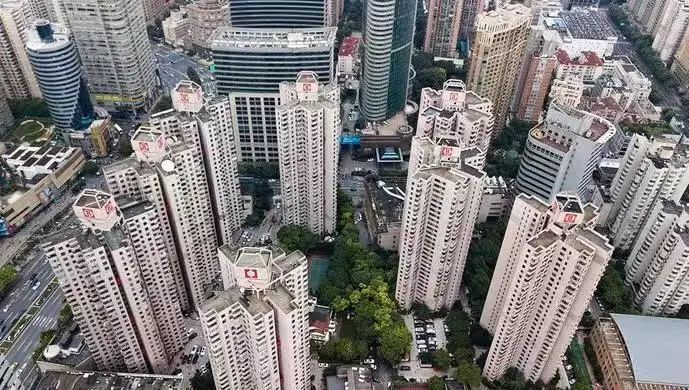
Today's Haihua Garden. Cai Weishai Photo
"Xintiandi", a business card in Shanghai facing the world, Taiping Bridge area, 1996
In the history of Shanghai's urban renewal, the "Xintiandi" left a strong color. Through Xintiandi, the Shanghai people knew for the first time that the crowded Shikumen could become so tall and even became a business card for Shanghai facing the world.
The land where Shanghai Xintiandi is located is called Taiping Bridge area. 100 years ago, the Taiping Bridge area was composed of 23 Shikumen neighborhoods and a large vegetable field. In the 1990s, it was very lively, but after all, it was an old city.
Yuanlu Bay Area hopes to improve the living conditions of "72 tenants" living in Shikumen through the old reform. At the same time, boldly innovate, proposing to do some "different" on this land, reflecting the international international international construction international international international construction international international construction international Function and image of economic center and international metropolis.
After several contacts, the former Luwan District and Hong Kong Ruian Group promoted the birth of the "Taiping Bridge Old District Reconstruction Project". After 1996, the Taiping Bridge region was changed one after another, and more than 20,000 residents moved out of the old house and moved into a new home.
After the residents were moved, Shikumen, who was free, experienced unprecedented transformation: or basically reserved, reinforced structures; or retaining the external, internal structure demolition and reconstruction; No matter what kind of reservation, many historical buildings are successfully retained, which is concentrated in today's Shanghai Xintiandi north and south miles. The Taiping Bridge area is the first old land -changing plot that combines urban renewal, economic development, people's livelihood improvement and cultural protection.
Shanghai Xintiandi influenced the renewal of many historical buildings in Shanghai. A large number of buildings such as Sinan Mansion, Bund source, Jianyeli, and Shangxianfang have adopted this model.
The old reform of the Taiping Bridge.
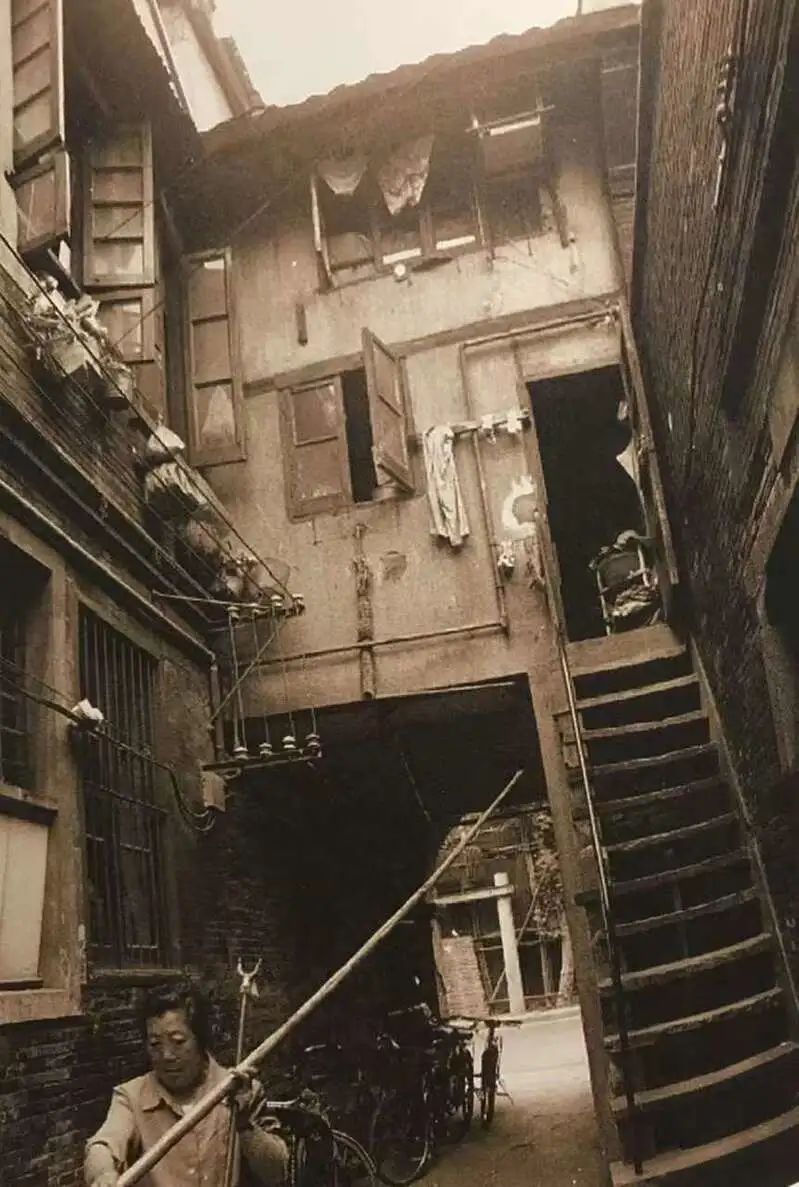
Xintiandi No. 1 before.
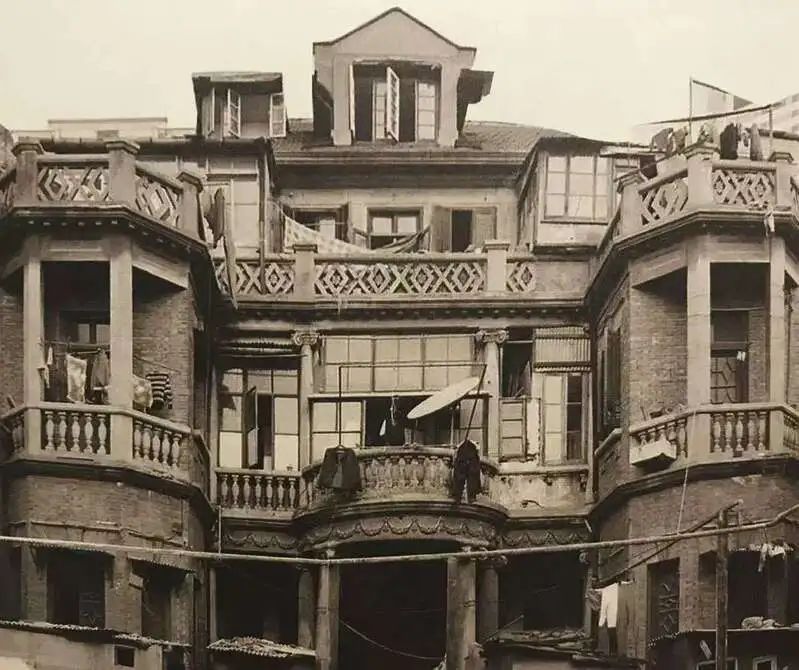
Workers are building a new world.
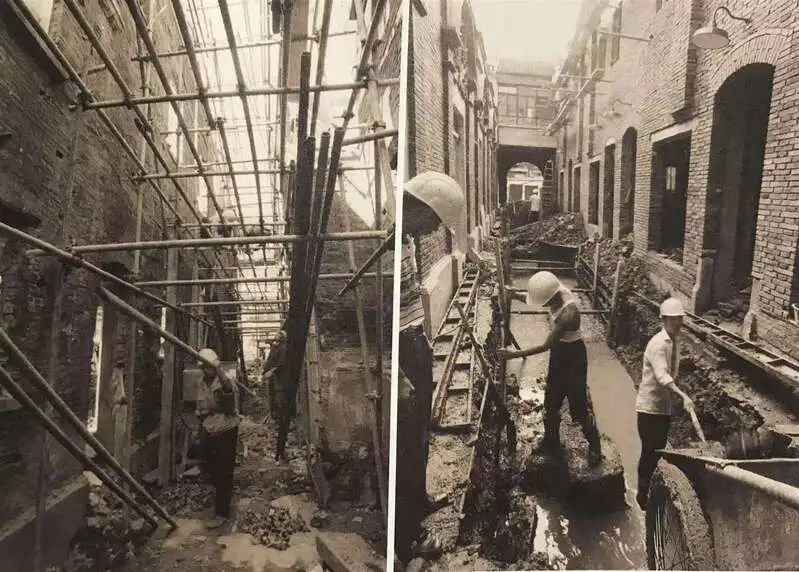
Today's Xintiandi. material
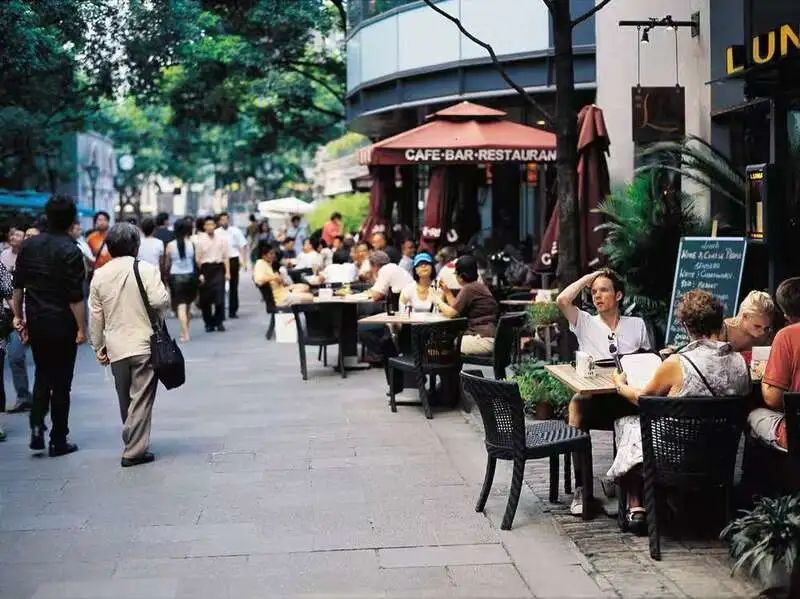
The maximum density of the maximum shantytown, 10 months of "ending" two bays and one house, 1999
In the 1990s, in Putuo District, the "Two Bays and One House" consisting of Tanzi Bay, Panjiawan and Wangjiazhai was the largest shantytown in the central urban area of Shanghai and the most concentrated shanty house in dangerous sheds.
It is not an exaggeration to describe the life situation here with deep water. The renovation of this old district is arduous and complicated, and the difficulties and contradictions encountered are unprecedented.
In 1998, an unprecedented Asian financial crisis occurred, and the renovation of the old district of the "Two Bays and One House" just launched has also brought economic pressure. In addition, the "two bays and one house" are large, with an average of 31 residents per acre of land, 410,000 square meters of dangerous sheds, and the building density and population density are the best in the city.
The old reform of the "two bays and one house", while government departments tried to introduce social funds, but also based on the actual situation of the main regulation and the actual tension of funds, the implementation plan was guided by currency resettlement, and the market mechanism was introduced to meet the diverse residents' diversity The requirements for resettlement have eased the contradictions of insufficient regulation of housing and tight funds.
Driven by the cooperation of community cadres, residents, enterprise factories and other parties, the hardest hard bone of the "two bays and one house" was stabbed in a short time: it lasted 10 months, the cost of relocation was 2.38 billion yuan, and the relocation was relocated. 8,762 residents, 147 relocated units, demolished 376,400 square meters of residential houses, and 84,500 square meters of non -residential house construction area. historical record. Most of the residents who lived in the half -century of snails moved to residents such as Taopu, Jiangqiao and other residents.
The "Two Bays and One House" renovation project was named "COSCO Two Bay City". It officially started in July 1999 and was constructed in four phases. It was fully completed in February 2006. The barren and backward "two bays and one house" shantytowns finally turned into the largest modern ecological residential park in the Shanghai Inner Ring Road.
In August 1998, the "Two Bays and One House" area opened the curtain of relocation.
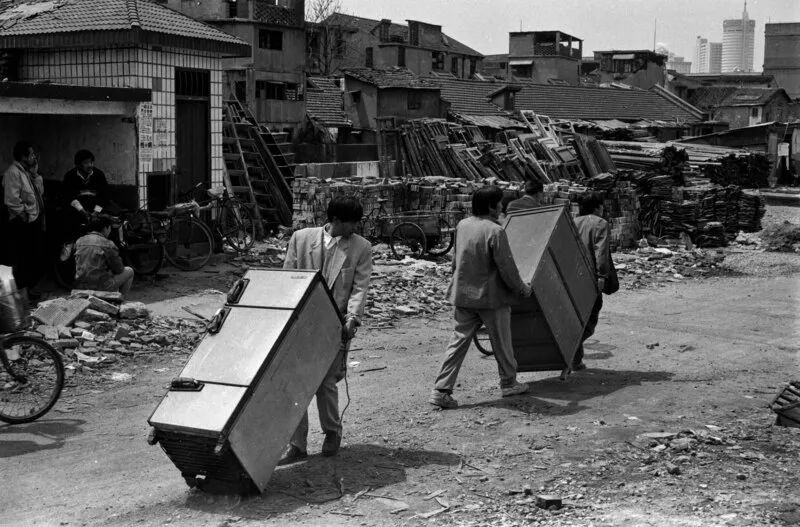
The "two bays and one house" old district renovation project started construction and was basically completed in 2007. material
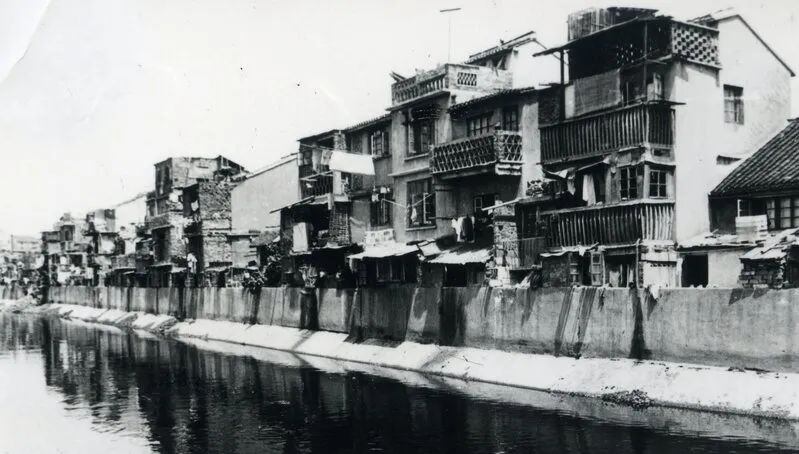
COSCO and two bay cities built in the shantytown "Two Bays and One House".
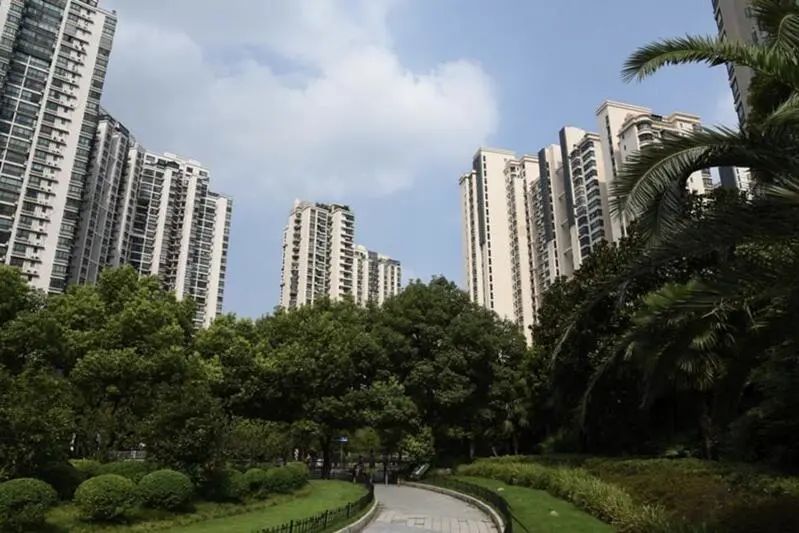
"Shinshift of the sun", the transparent and open and open and fair Jianguo East Road plot 390, 2009
In May 2009, 390 old renovation land on Jianguo East Road, the former Luwan District was placed in a touch screen.
People can find information such as relocation policy, house area, resident population, resettlement listing, compensation settlement, and latest contracts on the touch screen, which can not only check their own homes, but also see other people's homes. This touch screen system was called "House Requesting System", which caused a sensation in the old reform and quickly promoted in the city.
Each exploration and innovation in the old reform is about how to open up the blocking point and accelerate the push of the old reform.
At the end of 2000, Shanghai finally eliminated 3.65 million square meters of dangerous sheds, and housing difficulties with a per capita residential area of less than 4 square meters were resolved. But the pace of Shanghai's old reform did not stop. According to statistics in 2001, there were still 20 million square meters of secondary miles in Shanghai at that time. However, at this time, the old reform encountered the "new problem": around the area of the house area and compensation, the negotiation game of the residents and the main body of the relocation was complicated, making the old become "the first difficulty in the world."
In 2001, the demolition regulations issued by the State Council's Legal Affairs Office proposed the concept of "value swap". According to this, the biggest feature of Shanghai has been introduced, and the biggest feature is from the past "several people" to "digital bricks".
In 2009, the 390 plot of Jianguo East Road became one of the first bases for the city to pilot the "consultation system, digital bricks, sets the bottom, and the naquamor of the security." The base introduces the "house collection publicity system", and all information is open and transparent to ensure the implementation of the new policy of relocation.
After exploring, the "sunlight transparency" policy of the old reform solidified in the form of laws and regulations. The collection policy of Shanghai has established a "two consultation" mechanism, which strictly requires that the same base collection policy is consistent and open and fair. From the level of institutional design, the government's collection of relocation and relocation is matched with the willingness of the people to improve life.
After the implementation of "sunshine relocation", the people's cooperation with the old reform has increased significantly. More and more places that have completed the old renovation land in more than half a year and a year.
Zhang Guoliang, the general manager of the national model worker and the general manager of Shanghai Anjia Real Estate Demolition Co., Ltd., held a mobilization meeting to the old residents to clarify the policy of "the old reform of the sun". material

From the demolition of the "Dry onion" to the Pingliang West Land in the Sunshine Sunlight, 2016
In October 2016, the last base of Pingliangxi's old reform was successfully signed. Before moving away, the old residents spontaneously filmed a documentary "Longren Memory". In the camera, among the celebration crowds on the gongs and drums, an old resident of No. 244 Tongbei Road is using the "slide" made of wooden boards to carry furniture from the large truck downstairs from the window on the second floor. For many years of old white refrigerators, a wardrobe bought when they got married in 1981, a 30 -year -old bed ... Pingliang West Bag in Yangpu District is the largest second -class old mile in Shanghai's central urban area. As one of the five major old -fashioned regions in Shanghai, Pingliangxi has changed the decade of the demolition from the onion type to the sunshine.
In 2005, Pingliang 22 and 23 neighbors started demolition. "At that time, it was still demolition and there was no concept of old reform." The staff recalled that "residents' acceptance of compensation and resettlement methods is very low. Very prominent. "
By 2009, neighborhoods of Pingliang 16, 17, and 18 began to implement the sun collection policy. In 2014, Pingliang 2 and 3 of Pingliang 2 and 3 reappeared the old reform. After the implementation of sunlight, the residents signed the same contract with the same contract on the first day and the last day, and they no longer suffer from questioning fairness.
In 2016, Yangpu changed the "decisive battle Pingliangxi", and the five neighbors of Pingliang started the old reform. At that time, Yangpu District released the city's first "full process management" document specifically for the old reform, which was in the entire process of planning, project establishment, two -round consultation, ending, land transfer, development and construction of the old reform project. All collection elements are systematically summarized. In terms of time, the work arrangement form is formulated by the inverted time node; in terms of specifications, all the collection firms execute the unified process, do not open the mouth, and one path to the bottom.
Thanks to the "full process management", Pingliangxi, who experienced 10 years of old reform, the last five neighborhoods ran out of the old "acceleration" in one year.
The old cards of the resident's house accumulated into a Pingliangxi memory.
Pingliangxi's former Longrenli. Yutong Yellow Tips
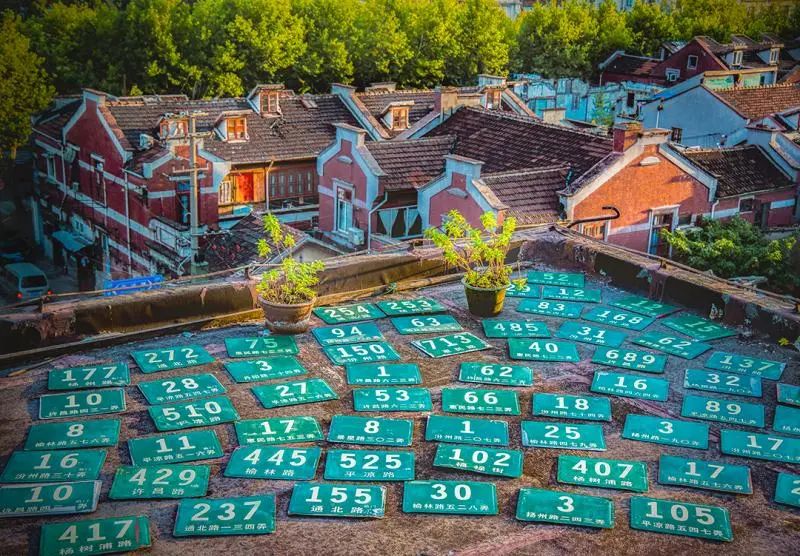
"Symptoms and not accepted, people leave the house and stay", carefully repaired the construction of the Zhangyuan plot, 2018

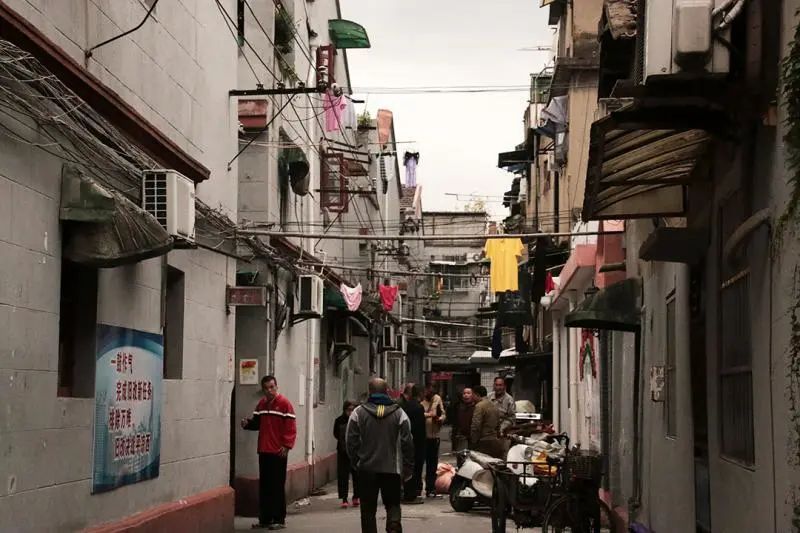
Zhang Garden, built in 1882, is the largest public park in Shanghai in the late Qing Dynasty. It is known as the "first place in the sea" and brings together 28 different architectural styles of Shikumen in Shanghai. But with the stay of "72 tenants", Zhang Yuan gradually declined. Before the old reform, the over -use of Zhang Yuan was severe, and the residents' living conditions were poor. Nearly half of the residents were still "toilet."
On September 30, 2018, Zhangyuan started the old reform. Jing'an District adopted a protective collection model of "levy without receiving, people staying". Zhang Yuan is also the first urban renewal project in Shanghai to implement protective collection and transformation. In January 2019, Zhangyuan plot took effect.
After the residents were moved, Jing'an District launched a protective transformation of Zhangyuan: almost all of the land in the plot were fully repaired, and the "one strategy and one plan" was repaired, and it was most likely to retain the historical style and historical buildings as much as possible.
According to the comprehensive transformation plan, Zhangyuan will introduce cultural venues such as commercial, creative office and trendy centers, art galleries, and cultural performing arts centers to expand more new space for people's livelihood and public services. This year, the transformed Zhangyuan West District will be the first to debut.
Overlooking Zhangyuan. Provided by Jing'an District
Zhangyuan life scene in Shanghai photographer and historic recorder's mat.

It took 22 years, and the "depression" 3 kilometers away from the Bund disappeared from Hongzhen Old Street.

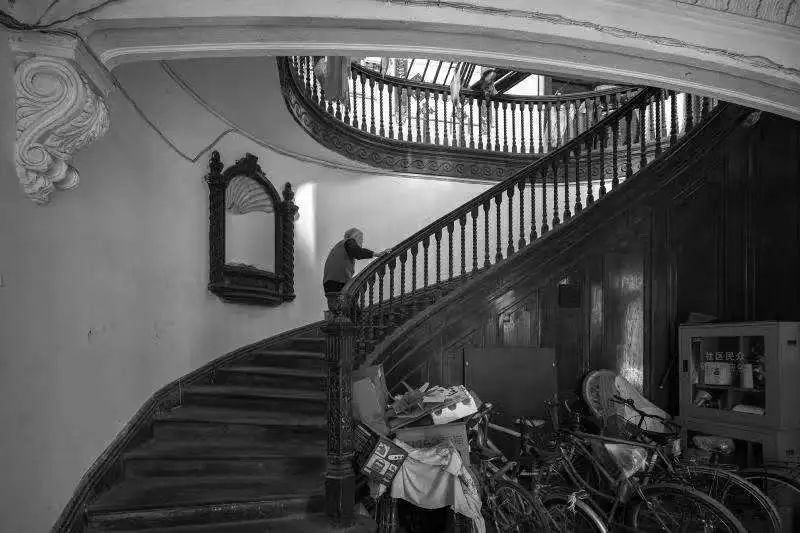
Hongzhen Old Street is only 3 kilometers away from the Bund, but it is a urban depression -a large shantytown, with more than 14,000 households and about 900,000 square meters of critical sheds.
Its old reform was started in 1996. In April of that year, the Ruian Group of Hong Kong invested 500 million US dollars to cooperate with Zhonghong Group to transform Hongzhen Old Street and build Ruhong New Town. The relocation of the first land was smooth. In 1997, the relocation and land were relocated in 1997.
However, due to the age of Hongzhen Old Street, complicated personnel, and social contradictions, the old reform project was launched for 16 years, but the area of successful relocation was just half. "Warm swallowing water" cannot be burned down, part of the reason is the blurring of the policy. Residents are accustomed to the concept of "countless people's heads, counted bricks, and adding heads". The relocated households and relocated parties always experience the process of leather to negotiations.
In May 2009, the "two consultations, bricks plus sets, and full open operations" were implemented in the 3rd of Laoshima Lao Street, Hongzhen. With the support of the urban government, the movement of the movement in collaboration with the streets, public security and other departments, in the past six months, analyzed the situation from house to house, repeatedly solicited residents' opinions and formulated detailed operation plans.
When communicating with the residents, the staff often fights like this: "Only 'straight pants', no 'flared pants', all policies to the end." The base also adopts a third -party intervention mechanism. The supervision team of the People's Congress and CPPCC members supervised the execution process.
The old reform policy of sunlight, openness, and transparent help helps "swallow water" boiling. And various external conditions are increasingly mature, so that Hongzhen Old Street has changed the fast lane. In 2018, the signing rate on the day of the second round of the 122 -neighborhood exceeded 90%, marking that the old reform tasks in the old street area of Hongzhen were fully completed, and the "last shantyan family" of Hongkou District disappeared completely.
Old photos of Hongzhen Old Street.
New scenery of Hongzhen Old Street. Hongkou District provides
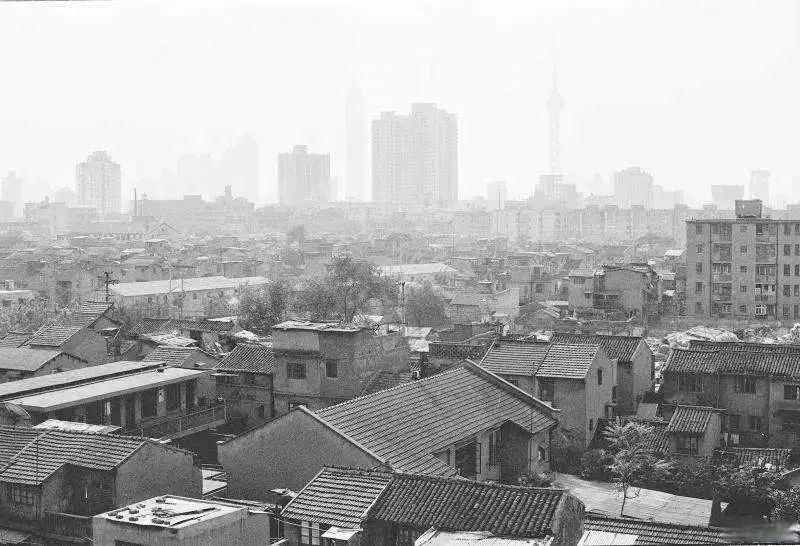

"Urban areas, government -enterprise cooperation", cracking financing difficulties in Hongkou District, 2019
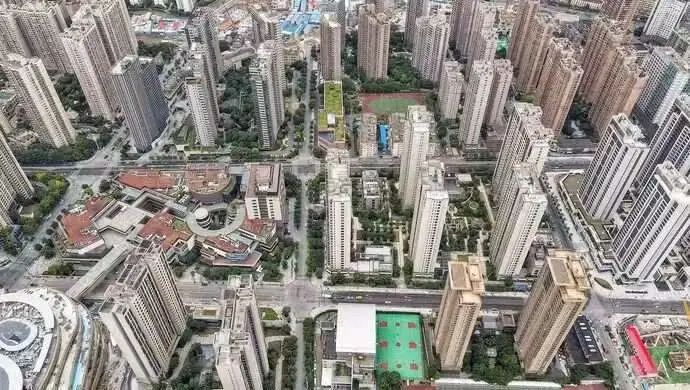
Most of the 17 neighborhoods in Hongkou District were built from the old style of the old style from the 190s to the 1940s. Among them, about 56,000 square meters below the second -class old miles below the old miles below the old reform in 2019.
This neighborhood is the first old reform project in the city after the new model of "urban area joining, government -enterprise cooperation, and district -based". In Hongkou District, Municipal Real Estate Group and Shanghai Hongfang (Group) Co., Ltd. and North Bund Group invested in proportion to set up Hongkou City Update Construction and Development Co., Ltd. to coordinate the establishment of platform resources and be responsible for preparing the implementation plan to achieve a win -win situation.
The so -called "urban area and government -enterprise cooperation" is to break the original financing difficulties and explore a new way to speed up the old reform. After intervention with a state -owned background, the market mechanism uses the market mechanism to carry out the old reform from multi -channel financing to take into account social benefits and economic benefits, and control the cost of receiving and storage.
Under the premise of funds, the acquisition of the old land reform is not only fast, but the satisfaction of residents has increased at the same time. The signing ratio of the 17th neighborhood on the first day of the selection reached 98.81%, creating a new high signing rate on the first day of the large -scale old renovation plot in Hongkou District.
Hongkou 17 neighborhood. Hongkou District provides
The "Ten Working Methods" became the "magic weapon" of the masses' work.
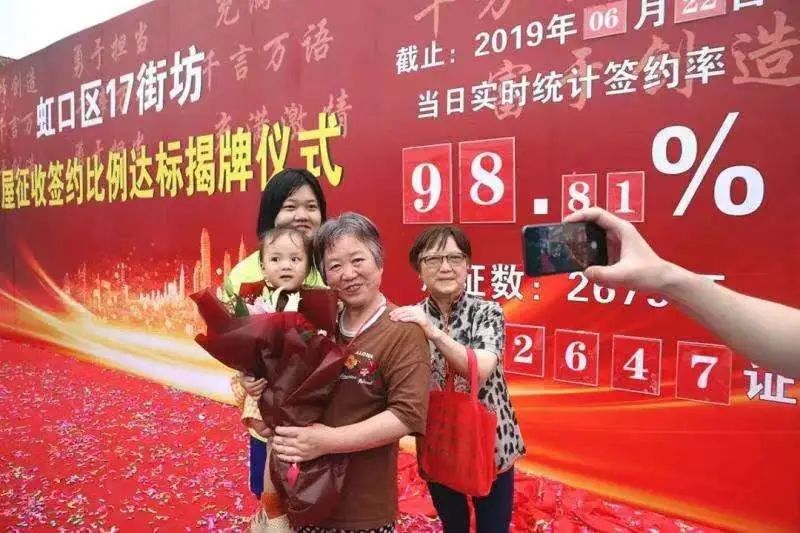
Baoxingli is located on Jinling East Road in Huangpu District. It is a hundred years of Lane District. It used to be beautiful; but as the population increased, the living environment became more and more crowded. Residents lived in the most prosperous parts, but lived a very urgent life.
In July 2019, 1136 residents of Baoxingli ushered in the old reform. It took only 172 days to achieve 100%of the residents' independent signing and 100%autonomous movement, which refreshed a new record of the old reform results in the central urban area.
The old reform is the first difficulty in the world, and the old reform of Baoxingli is particularly difficult. Many residents have high expectations, "People are golden plots, and we are a diamond plot for Baoxingli. That's not the same!"
"The old reform is a good thing, and good things must be done." The cadres of the street neighborhood committee and the staff of the collection institute formed the collection team, and they were packed into a block and visited a household resident. Who is the living situation and what special difficulties, they all write down and think of countermeasures one by one.
On January 6, 2020, the old reform of the Baoxingli plot took effect.上海有关部门总结了宝兴里得以创下旧改新纪录的“十个工作法”:一线工作法、精准排摸法、党员带动法、危中寻机法、平等交流法、循序渐进法、钉钉子法、 The change of thinking, combined fisting, frequent contact methods ... promotion has become a mass work method to promote the old reform of the city.
Bao Xingli, the old change.
Jinling East Road plot (including Baoxingli) old residents moved. Jun Haiser Photo
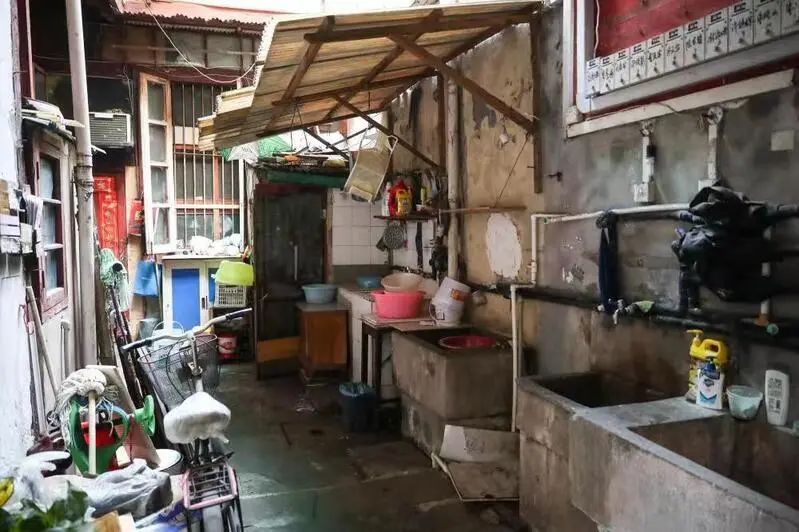
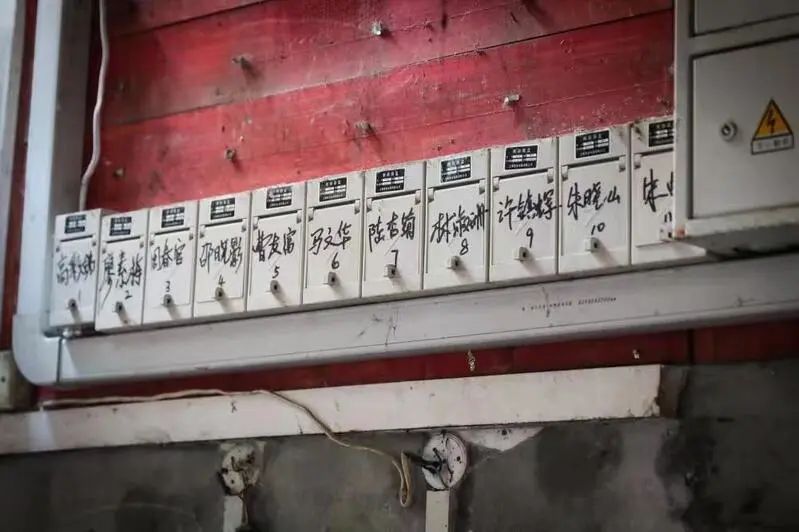
Leave the "baby" north of Kunming Road, North Bund, the Shanghai Jewish Refugee Memorial, 2021
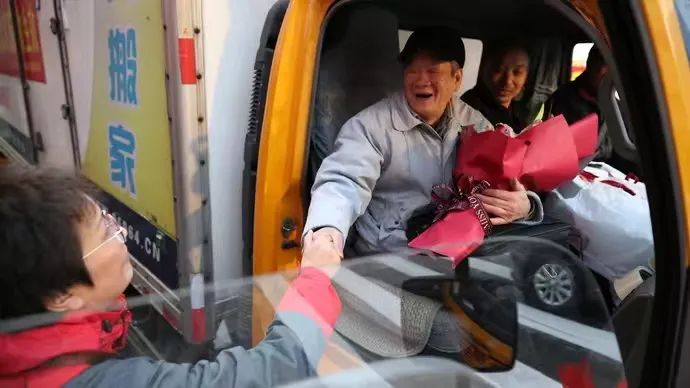
On June 28, 2021, the south of the north of Kunming Road, known as the "most difficult" reform of the North Bund, officially took effect with a signing rate of 98.8%. And this old land -changing plot has become the largest old reform project in Hongkou District by “packing” and nearly 6,000 residents of 10 neighborhoods. It will focus on the high proportion of high proportion within 3 months. The house reconstruction drawn a end.
During the old reform collection process of the south of the Kunming Road, Hongkou District took the lead in setting up the "Mobile Old Reform Base Party and Mass Service Station" in Shanghai. By integrating regional resources, the services required by the people such as legal consultation, petition reception, and public welfare lectures to the old reform are sent to the first line, making the old reform work closer to the hearts of the people.
After the completion of old blocks south of Kunming Road, the Shanghai Jewish Refugee Memorial Hall also received a number of "babies".
In the 1930s and 1940s, as the only city in the world that opened the door to the Jews at the time, about 20,000 Jews came to Shanghai to take refuge. Hongkou Titan Bridge area was one of their main settlements.
Many residents on the south of Kunming Road have moved away, but some of the furniture and other places that Jews have used or presented at home are now donated to the Shanghai Jewish Refugee Memorial. Chen Jian, the curator of the Shanghai Jewish Refugee Memorial: "This is not only to retain the memory of the historical features of the basket and bridge, but also to record the friendly story of the cross -ethnicity and show the light of human justice and civilization."
Big suitcases used by Jews donated by residents.
Land south of Kunming Road in North Bund. Photo by Jun Jiang Diwen
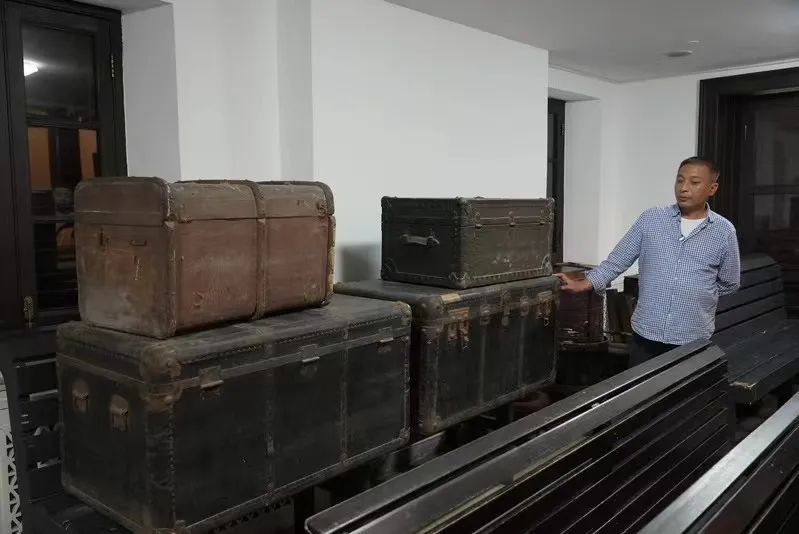
"Poor Street" has finally entered the historical sea plot, 2021
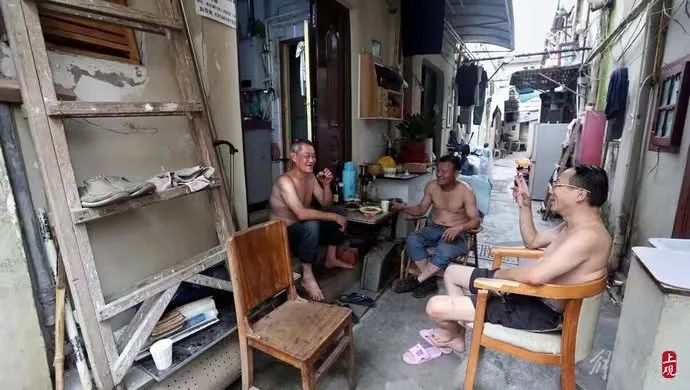
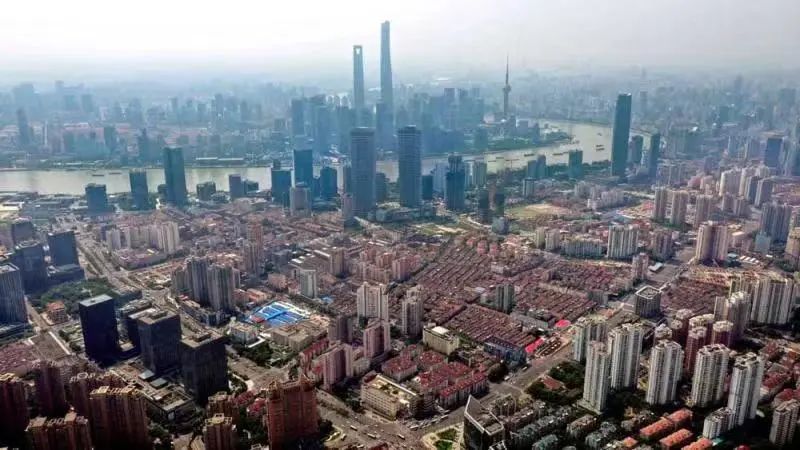
In the 1980s, Cheng Naihan created the novel "Poor Street" based on his experience in Yangpu Dinghai and was adapted into a TV series. "Poor Street" became synonymous with Dinghai.
Prior to the start of the renovation of the old -fashioned old district in 2007, 10 of the 20 neighborhood committees under Dinghai Road Street were second -class old and shantytowns, and the old districts to be transformed were as high as 290,000 square meters.
Dinghai has always been the "Innovation Test Field" in Yangpu District. For example, Dinghai 154 neighborhood D block. This is a small base with only 47 residents, which was not included in the old reform plan that year. Although the base is small, the residents have a strong willingness to change their old changes. Therefore, Yangpu District allowed the residents of the base to implement relocation through the "three 100%" overall negotiation methods (the resident's willingness to consult the consent rate reached 100%, the resident signing rate reached 100%, the residents were relocated to the house and the house was transferred to the house It took only 57 days from the start -up signing to all relocation. In 2020, the Dinghai 129 and 130 neighbors of Yangpu's largest wool land were re -activated after 15 years, and it also benefited from a innovative practice. The innovation of Yangpu District has adopted a model for the district government and the development unit and the bank to sign the three -party cooperation agreement of the old district reconstruction project. Relying on the company's own funds and bank loans to raise project funds, and the development and construction in accordance with the land transfer contract, a hundred places will be completed in the future. Urban complex constructed by 10,000 square meters.
There is also a "seven platter" old reform in Dinghai. Seven neighborhoods are located in a large area surrounded by Guiyang Road, Pingliang Road, Yangshu Road, and Longchang Road. There are not many yields for each neighborhood. If the old reform is started one by one, the timeline will be pulled very long. In 2021, Yangpu creatively merged the sporadic old library of seven neighborhoods, and the "group" started the old reform. In just two months, the residents of 7 neighborhoods welcomed a new life.
On December 19, 2021, the last old block of Dinghai started the "second consultation", and the reporter walked into the Dinghai Road before the relocation.
Dinghai Road from Liangzhou Road to Yangshuopu Road is 188 meters long. The vendor is Lin Li, and the Huangshan people Wang Limei opened the "Lao Lao Tangyuan Store" for 20 years to sell 1,000 dumplings. When you click, the long line is lined up. The owner of the Chaye shop was fried on the stove at the door. The seafood stall owner squatted on Lutch -to -Lutch. The residents sat around the stove in the winter in the morning. This is Dinghai Road The final response. With the old reform of Dinghai, the fireworks of the "poor street" also entered history.
Seven Package plots and large chimneys of Yangshu Power Plant.
On the first day of the signing of the seven pingles, Aunt Wang pulled a stool at the door of the house and talked about the previous life.
The old resident Chen Zhongli and the couple moved away from the old house and finally took a group photo.
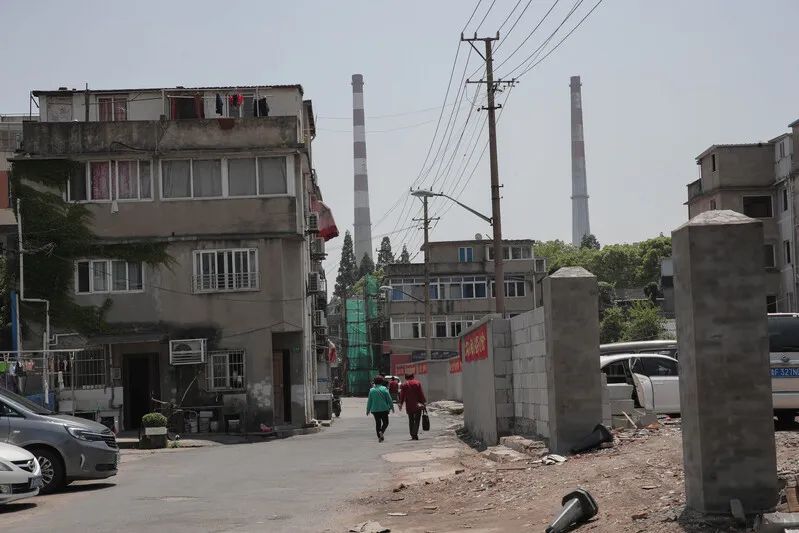
Fireworks on Dinghai Road. Yutong Yellow Tips
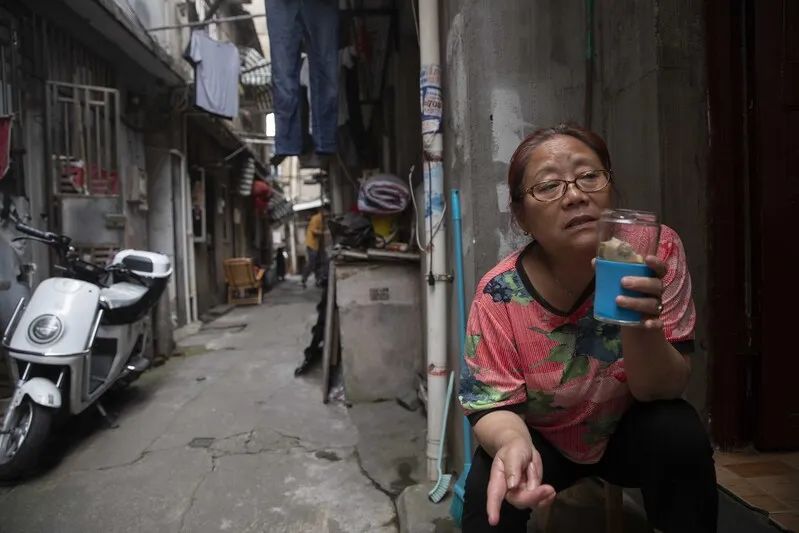
Residents of the epidemic area hopes to come to "Flower Dream" Menghua Street area Penglai Road plot, 2022
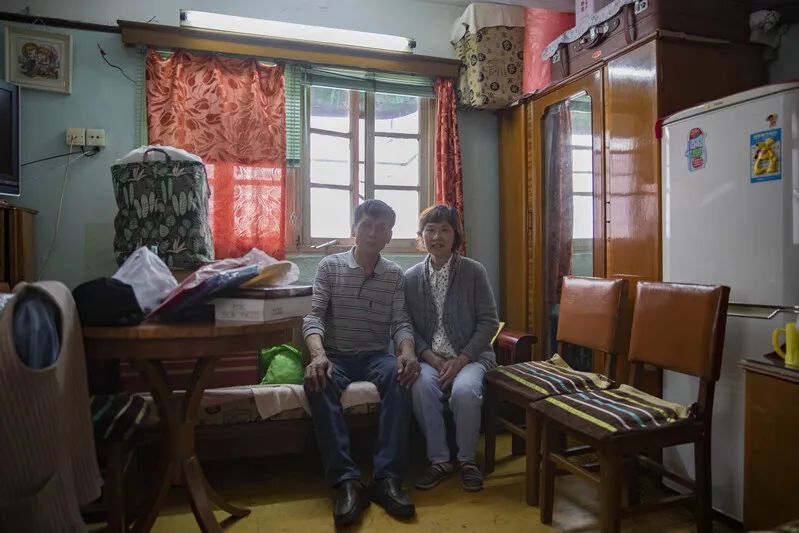
In the early morning of June 17, 2022, in the Penglai Road plot of Huangpu District, Tao Laiyu, 80, stood at the door of the house, watched the two daughters who helped her to clean up the house, full of joy ... "Where is it? Moving it? Let's help. "The old neighbors who passed by seeing Tao Laidi would ask with concern. The old city compartment of Huangpu District involved the old reform of the Penglai Road plot with more than 4,600 certificates, which took effect one day before.
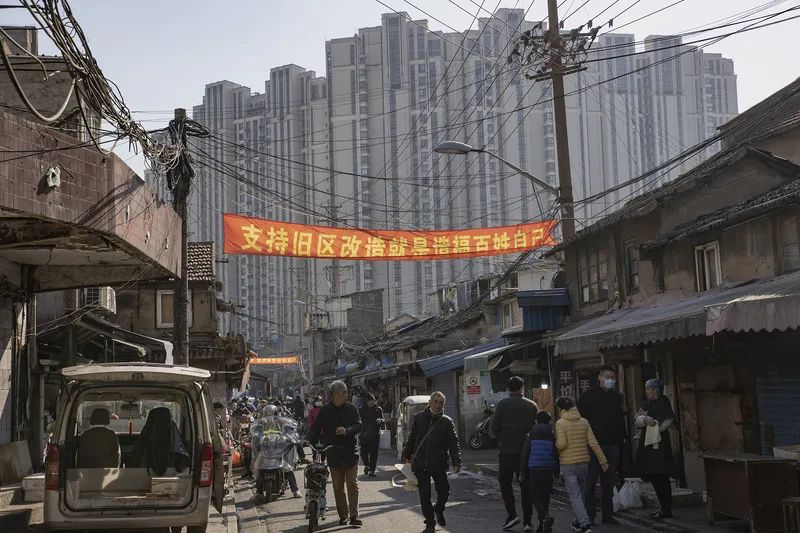
In the first half of this year, the epidemic in the new crown pneumonia was coming, and Menghua Street became one of the worst areas of Shanghai's epidemic. The old renovation of Penglai Road occupies most of the Menghua Street area.
There are more than a dozen households in a door, and the house area of each household is only more than 10 square meters; the kitchen and bathroom shared, and many people are using the "toilet"; Repair is still dilapidated ... High -living density, dilapidated houses, connected portals, and combined kitchen and bathrooms, so that the epidemic is spread quickly in the Menghua Street area. One "yang" is one piece.
Tao Laizheng's daughter said, "During the epidemic, my sister and I were closed in the outer area. My mother lived alone in Menghua Street. We took her every day. Moving! "After the test of this round of epidemic, residents' desire for moving out of the old residence and entering the new home was even more urgent.
In June, after the normal state in Shanghai, the old reform of Huangpu District restarted quickly. The residents of Menghua Street finally "flowers and dreams", embracing a new life with a beautiful longing.
Overlooking the Menghua Street area in the air. Photo by Sun Zhongqin
The old residents of Menghua Street Land live.
Tao Laidi, who lives in Penglai Road, waited for the old reform.

Tao Laizheng's original home.
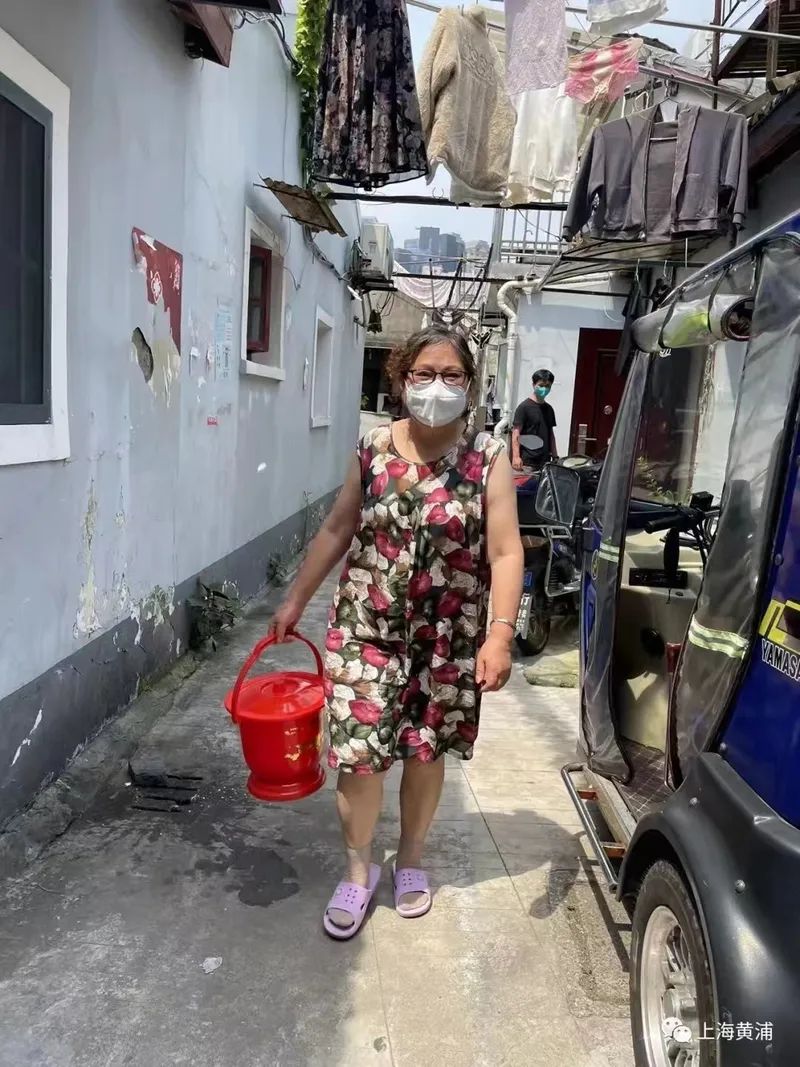
Menghua Street's old city compartment resistance, "Dai Bai" was disinfected on the street. Mao Guanyu Photo
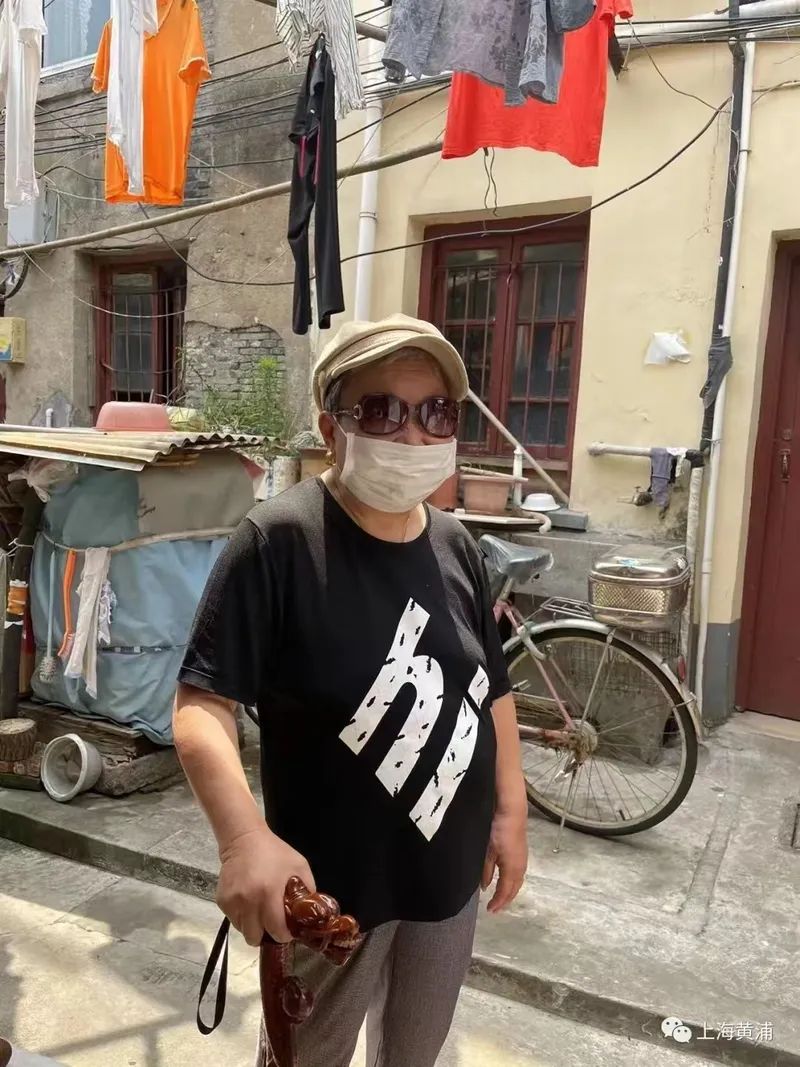
In the last second -level old miles of Shanghai, 143 Nong District, Jianguo East Road, Huangpu District, and a large abandoned large water tower towering. The residents under the water tower finally ushered in the old reform. Haishar Photo
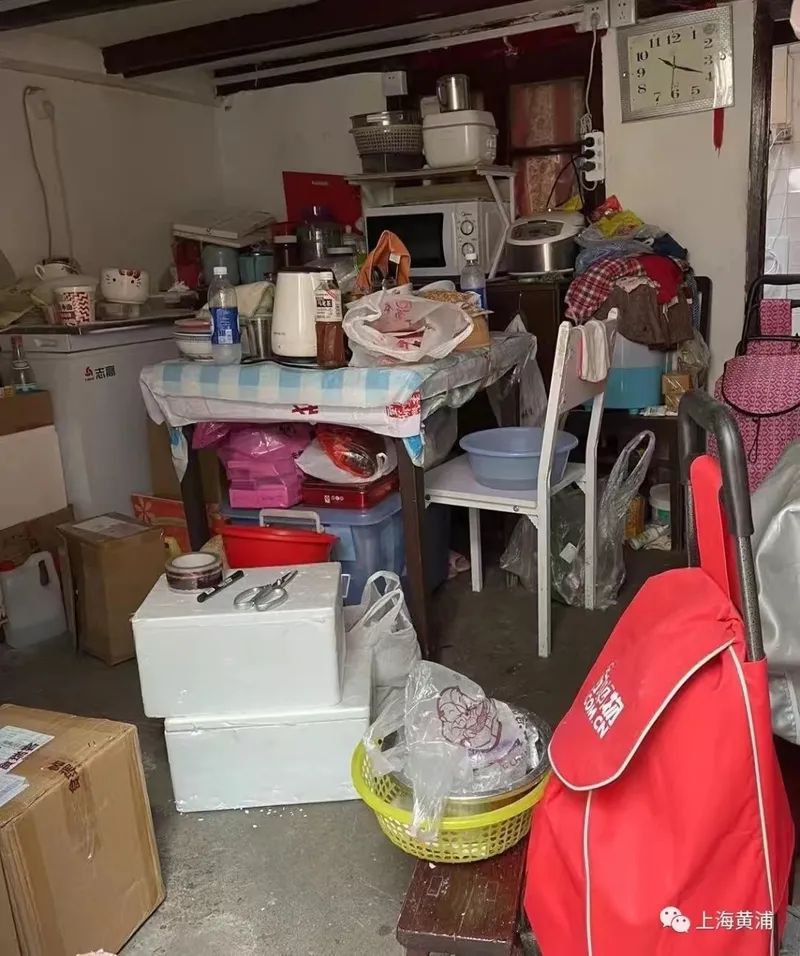
Liberation Daily · Shangguan News Original manuscript, reprinting without permission

Author: Tang Yan Zhou Nan Huangjian
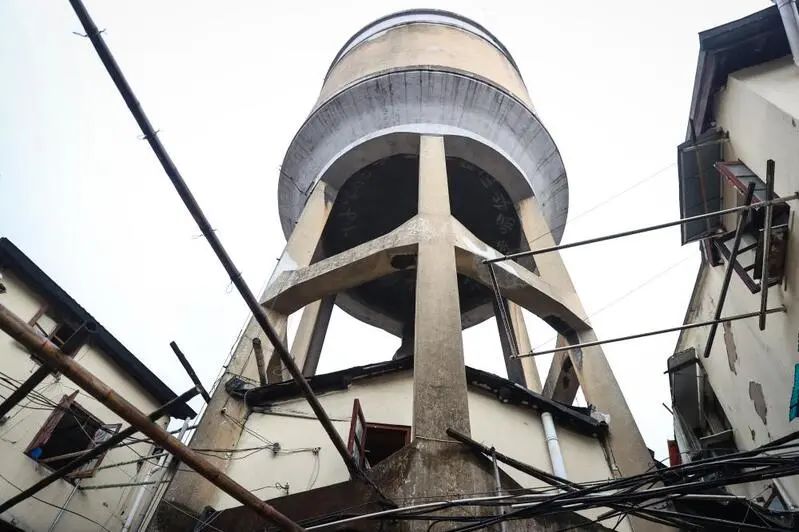
WeChat editor: Miss Pi
School pair: Kelly

- END -
"Hurry up" the itinerary "Star" mark, goodbye!Can you "wave" casually during the summer vacation?

JPEG Webkit-Playsinline Recently, the official website of the Ministry of Indust...
In 2022, the Yinling Lecture Plan was launched, and 5,000 retired teachers supported rural compulsory education schools
In order to strengthen the construction of rural teachers and make full use of the advantages of retired teachers, the state has launched a silver -age lecture plan. This year, 5,000 retired teachers